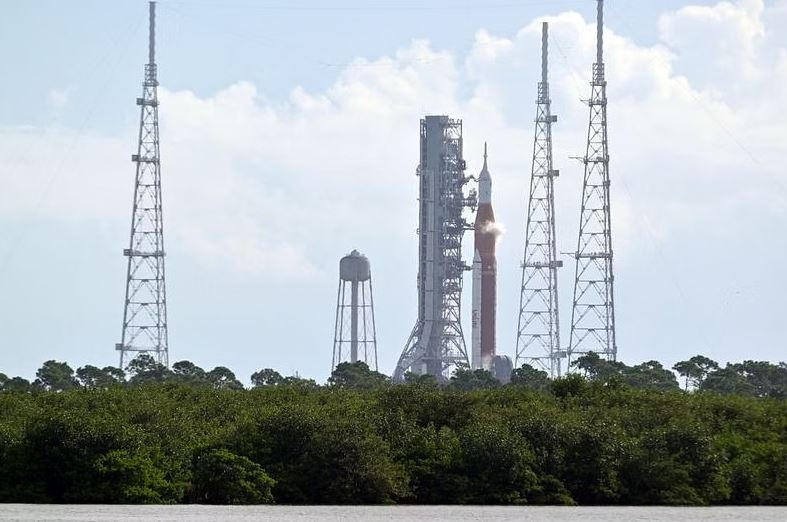NASA’s new $4 billion moon rocket withstood hurricane-force winds and torrential rains on its Florida launchpad early Thursday morning, according to an early NASA examination in the storm’s aftermath, with only minimal damage.
Sustained winds of 85 miles per hour (136.8 kilometres per hour) were measured by launch-site sensors hundreds of feet above the ground, with gusts exceeding 100 miles per hour, testing the design limits of the 32-story-tall rocket and posing additional risks to a spacecraft already plagued by technical issues that have delayed its debut launch.
The United States makes the wind sensor measurements from NASA accessible to the public Online National Weather Service. Before the storm, U.S. space agency officials said that the rocket was intended to endure up to 85 mph winds on the launchpad.
In a quick tweet by NASA Associate Administrator Jim Free, the agency recognised wind sensor readings from a height of 60 feet indicating gusts of 82 mph.
The National Hurricane Center in Miami stated that Nicole’s greatest sustained wind speeds on the ground were 75 mph, with greater gusts, as it made landfall south of the Kennedy Space Center launch site in Cape Canaveral on Thursday morning before dawn.
Instead of attempting to wheel the giant Space Launch System (SLS) rocket back to its hangar before the hurricane approached, NASA chose to secure the spacecraft on the launchpad where it arrived last week prior to Nicole’s tropical storm prediction.
After two failed countdowns in late summer, the SLS and its Orion capsule were being prepped for a third launch attempt that would mark their highly anticipated maiden flight and the debut mission of NASA’s Artemis lunar exploration programme.
NASA engineers determined that transporting the big rocket, a 12-hour endeavour, in heavy winds as a storm approached was too dangerous.
“Camera checks reveal relatively little damage, such as loose caulk and rips in weather covers,” tweeted Free, who supervises a significant portion of the agency’s Artemis programme, Thursday afternoon. The crew will shortly do further walk-around inspections of the vehicle on-site.
Last Thursday, NASA moved the Space Launch System (SLS) to its launch pad in preparation for a Nov. 14 test trip toward the moon without people on board.
Mark Burger, launch weather officer for the 45th Weather Squadron at the Cape Canaveral Space Force Station, said, “Even at that time, there was always a fear that someplace in the Caribbean would be a favourable region for at least some development of a tropical cyclone.”
“Of course, nothing existed at the time, so you can only rely on probabilities,” he said.
Nicole assumed the form of a possible tropical cyclone when SLS arrived at the launch pad, about 4 miles from the Vehicle Assembly Building at NASA. NASA postponed the scheduled launch of the rocket to November 16, when forecasters projected Hurricane Nicole would intensify.
